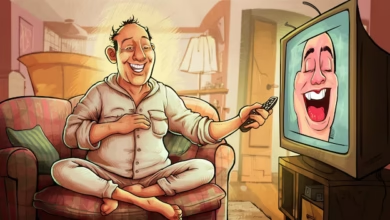Sassy Little Brat NYT: The Controversial Piece That Caught Attention

The term “sassy little brat” has recently gained attention, notably after its use in various online platforms and media outlets. One of the most well-known places where this phrase has been gaining traction is in a certain piece from The New York Times (NYT), which delves into the behavior, social implications, and cultural significance of the phrase. But what exactly does “sassy little brat” mean, and why has it become such a sensation? Let’s take a closer look.You know about sassy little brat nyt and openrendz.
What Does “Sassy Little Brat” Mean?
At first glance, the phrase “sassy little brat” might sound like a playful or even derogatory term. The word “sassy” is often used to describe someone who is bold, outspoken, and sometimes a little cheeky in their behavior. “Brat,” on the other hand, traditionally refers to a child who is spoiled or behaves badly. When combined, the phrase creates an image of a child or even an adult who displays bold, audacious, or somewhat mischievous behavior, often challenging authority or societal norms.
However, the phrase isn’t necessarily intended as an insult. In fact, it’s often used in an affectionate or humorous context, celebrating the rebellious, independent, and confident nature of the individual it’s describing. The concept of being a “sassy little brat” taps into a modern societal shift where self-expression and bold personalities are increasingly embraced rather than criticized.
The New York Times (NYT) Perspective
The NYT article that brought “sassy little brat” to the forefront explores how such phrases reflect changing attitudes toward assertiveness and defiance, particularly among younger generations. In the past, children or young adults who exhibited bold or defiant behavior were often seen in a negative light, criticized for being disrespectful or unruly. However, with the rise of social media and changing cultural standards, these behaviors are now often celebrated.
For many, the “sassy little brat” embodies a person who is unapologetically themselves. The NYT article dives into how this phrase is often used to describe individuals who break societal expectations, challenge traditional norms, and refuse to be boxed into conventional roles. It emphasizes the empowerment that comes with embracing this type of behavior, as well as the ways in which such personalities contribute to shaping social and cultural landscapes.
Why the Phrase Resonates So Strongly
The growing popularity of “sassy little brat” speaks to broader shifts in modern culture. Today, individuality is celebrated more than ever before. The rise of platforms like Instagram, TikTok, and Twitter has provided people with a space to express their authentic selves, whether through fashion, opinions, or simply their general attitude toward life. The idea of being “sassy” is now seen less as an act of rebellion and more as an act of self-empowerment. People are no longer afraid to be bold and outspoken, embracing the fact that they might be labeled as a “brat” for simply standing out.
The NYT article also touches on how the phrase often challenges gender norms. In the past, women who exhibited assertiveness or confidence were often branded with negative terms like “bossy” or “difficult.” However, in recent years, those same traits have been reclaimed and embraced, with phrases like “sassy little brat” becoming an empowering, even endearing, label. It’s a reflection of how society is increasingly accepting and celebrating women, children, and adults who challenge expectations.
Cultural Influence and Pop Culture
“Sassy little brat” has also made its way into popular culture, often used in books, movies, and TV shows to describe characters who are confident, witty, and unafraid to speak their minds. These characters often end up being fan favorites because they represent an escape from traditional, often passive, roles that people are expected to play. Think of characters like Wednesday Addams from The Addams Family or Luna Lovegood from Harry Potter — they embody the qualities of being unapologetically themselves, regardless of what others may think.
The phrase also taps into a universal truth: everyone has encountered someone in their life who, at times, may be described as a “sassy little brat.” Whether it’s a mischievous child, a witty friend, or even a public figure known for their bold opinions, this type of behavior is a natural part of human interaction and expression.
Conclusion
The rise of the phrase “sassy little brat” is not just a passing trend — it’s a reflection of changing attitudes towards self-expression, defiance, and empowerment. In a world where individuality is increasingly valued, the once-negative term is being reclaimed and used as a badge of honor. The NYT’s examination of the phrase shows how language and culture are shifting, celebrating people who dare to be different and unafraid to express themselves. Whether it’s a child pushing boundaries or an adult challenging societal expectations, the “sassy little brat” is here to stay.



